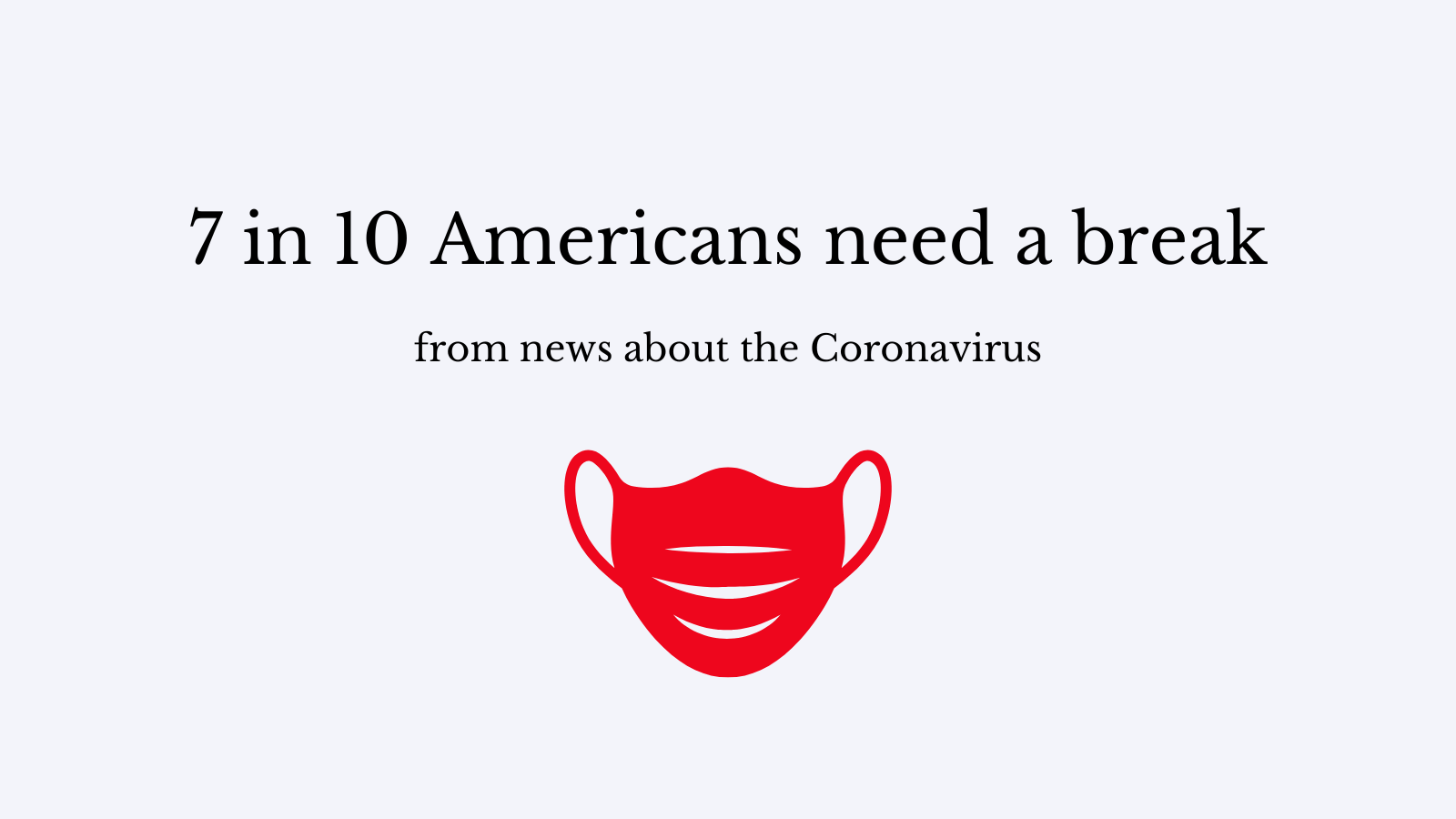Should you use the words ‘Covid-19’ in your content? After years of hype, headlines, and completely freaking out every time you sneeze — any mention of the pandemic’s given name is a hard pass for many marketers. And honestly, we get it. As a team of writers, we are one “unprecedented times” away from being completely done with the whole dang thing. (Plus, we’ve seen how content ages on the internet — and it’s not always pretty.) But like it or not, the pandemic was and still is one of the core defining trends of the early 21st century. From how we shop to how we hire — and even how we think — it’s impacted each and every one of us. And if you believe in using content to provide original insights on the social, economic and business elements impacting B2B audiences — we hate to tell you, but you’re going to have to address the dreaded C-word one way or another. So how can you write about the pandemic while keeping your content evergreen? We’ve got a few tricks to help you out.
How to talk about Covid in your B2B content
- The case for keeping Covid
- Words to use in your content instead of COVID
- Other things to keep in mind when addressing the pandemic in your content

Why B2B brands shouldn’t nix Covid from their content
If you’re like us, you want to keep your content as evergreen as possible, while still speaking to the current moment. And for that, capitalization plays a surprisingly big role. If all caps make you feel like someone’s SCREAMING AT YOU, seeing the name of one of the world’s most deadly pandemics jumping off the page at you can understandably make you feel a little WoOZy. After years of lockdowns (and the longest q-tips we’ve ever seen 🥴), we honestly just don’t want to see it. But before you reach for the style guide, consider the impact it could have if you were to avoid mentioning the pandemic altogether.
“Research shows that we have a human tendency to turn away from mass suffering, as a form of self-preservation.”
A recent article for CNBC featuring public health experts like Anne Sosin of Dartmouth’s Rockefeller Center for public policy and Marney White, psychologist and epidemiologist at the Yale School of Public Health, explains how Covid numbness is prolonging the pandemic.
✨Recommended Reading:
Introducing 21 Ways COVID Changed the World “When we planned this issue, Omicron had not yet emerged. I wondered if people would be interested in stories about a pandemic that wasn’t over, even if they were over the pandemic This arm-over-the-shoulder reflection from Jen Schwartz, senior editor of features at Scientific American, examines the (somewhat unexpected) long-term implications of Covid and why we shouldn’t give up on a unified fight against it — even if we are totally over it.
Public health professionals and patient advocates are calling for the public to fight the urge to give into Covid fatigue and continue taking measures to eliminate the virus. “Research shows that we have a human tendency to turn away from mass suffering, as a form of self-preservation. The fact that the United States now has over 900,000 deaths from Covid-19 seems almost impossible to wrap our heads around. Our brains resist processing that information because it’s so overwhelming,” says Gale Sinatra, professor of psychology at the University of Southern California. The fact that over 300 people per day are still dying of Covid in some areas of the US is simply too much for people to process. Meanwhile, citizens of the Global South are facing an uphill battle that those of us in richer countries will never experience. This puts content marketers in an unfamiliar quandary. Somehow you’ve got to: ✔ Speak to the reader’s experience today ✔ Without dating your content ✔ Or triggering overwhelm in the reader So, yeah…just that. The good news is, there are plenty of other words, phrases and editorial conventions that can help you find the right approach to referencing the pandemic in your B2B content — plus a few core principles to help you troubleshoot when you’re not sure what to say.
✨Recommended reading:
The Words to Describe 2020 From ‘exhausting’, ‘surreal’ and ‘what fresh hell is this’, the Washington Post got some interesting responses after asking readers to describe 2020 in one word or phrase. If you’re looking for a reason to be grateful for where we are today, go ahead and take a cringeworthy look back on the year that changed everything.
Words and phrases to use instead of all caps “COVID” 😖
If you’ve been paying attention, you’ve already spotted the Easter egg. I’ve used the word ‘pandemic’ multiple times to avoid saying ‘Covid’ in places where a specific reference isn’t totally relevant or required. And while that might be the quickest way to reference the pandemic without triggering reader overwhelm (or worse, apathy) — it’s far from your only option. The right workaround will always depend on your voice, angle and context, but here are a few alternative words and phrases to try on for size.
| Instead of | You could try |
|
|
|
|
|
|
|
|
|
|
Other things to keep in mind when addressing the pandemic in your content
As a brand, you’re probably not reporting on the latest number of cases, deaths or vaccinations in your content. Like most B2B marketers, you’re concerned with the impact of all of these things on the business reader. With this in mind, here are a few fundamentals to help you strike the right balance for your brand.
The conversation is about more than the virus itself
Not a single industry has been left untouched by the pandemic. And while no one wants to revisit the events of the early 2020s, we’re still experiencing its impact every day.
A great way to avoid harping on the pandemic in your content is to simply advance the conversation.
Whether we’re consciously aware of it or not, consumer psychology has shifted since the onset of the pandemic — and that’s just as true for B2B as for B2C. Consider which industry paradigm shifts might help you elevate the discussion:
- How has your reader’s mindset changed when it comes to buying?
- What do they care about now that they didn’t care about before?
- What about the way they sell? What new hurdles are slowing or stalling their growth?
- How does your customer’s customer view the brand now that policies, economies and of course — budgets — have changed and shifted multiple times?
The bumpy ride into the new decade didn’t just reveal holes in global health systems. It peeled back important layers in areas like social justice, economic policy, and human psychology. That’s a whole lotta material to work with in your content.
✨Recommended reading:
The Coronavirus Is Not Chinese Pandemics are nothing new. And unfortunately, neither is racism. This thoughtful piece by Buzzfeed news reporter Sarah Schweppe for the Quibbles & Bits newsletter examines the important role words play in accurate and responsible reporting.
You should be updating your content regularly anyway
We’ve known since 2018 that Google loves fresh content. But how often do you plan and schedule important updates to your pillar pages and evergreen assets? One of the so-called ‘Covid-keepers’ for marketers who specialize in comprehensive, long-form pieces is the importance of refreshing your content on the regular. Reflecting on her review of more than 50 blog posts, Megan Mahoney writes for Ahrefs:
“Content refreshing is still an underused tactic that a lot of blogs can benefit from. If you tried it before and it didn’t work, there could be another underlying issue, e.g., a poor user experience, an irrelevant section in the beginning, or a poor search intent match.”
In other words, a brand with solid content hygiene is a brand with solid traffic. For your pillar pages and evergreen articles, make it a habit to update the content — including the data cited — at least once per year to keep it fresh, relevant and 100% kosher in the eyes of the SERPs. Of course, not all content is meant to be evergreen — and that’s ok. If you have aging articles on your site from March 2020, consider the cost/benefit of keeping vs. removing this content. And keep in mind, nearly every brand in the universe spoke up and said something about the pandemic when it hit. From a branding standpoint, leaving this content up signals that yours is a brand that steps up when things get tough.
In the age of fake news, you’ve got to think it through
Recent research from the WHO found 31 reviews of published studies that included fake news, misinformation, disinformation and infodemics related to health. And while these “analyses” may be fake, they have a very real impact on the way people view the ongoing pandemic.
The paper examined the proportion of health misinformation on social media across four studies and found that:
- Misinformation reached up to 51% in posts associated with vaccines
- Up to 28.8% in posts associated with COVID-19
- Up to 60% in posts related to pandemics
The lesson for B2B content marketers? Be extra careful not to fuel the fire. As publishers of branded content, most of us simply aren’t qualified to be reporting on the hard facts related to COVID-19. But we still have a responsibility to reference it where relevant. When discussing the pandemic in your content, be sure to always:
- Cite a credible source, such as the WHO
- Double check your verbiage to make sure you’re not misrepresenting data (e.g., conflating infections with reported cases is a common issue)
- Avoid speaking about the pandemic through the Western gaze
In an editorial for the Africa Is A Country blog, George Kibala Bauer writes: “To be clear, the language of some Western reporting on COVID-19 in Africa completely erases the agency and ingenuity of African governments, communities, and individuals. But sometimes, Western reporting deliberately sets up a binary in order to ‘provoke,’ generate clicks, and outrage only to then swing to the other side of the pendulum.” If you have a global audience, you also have a responsibility to speak to the global nature of COVID-19 — including the fact that many regions are still very much in the thick of it.
Content marketing is a conversation
In the roaring 2020s, content marketing is very much a verb. Every five minutes, marketers are presented with another “game-changing” pivot. Does it get tiring? Heck yes it does. But as a B2B marketer, you have a responsibility to use your content for the good of your community, while speaking to the shared attitudes that define the culture of your brand. Whether it’s discussing remote workflows, new sales strategies or changes in consumer behavior, there is a clear pre- and post-2020 dichotomy that you’re bound to come up against. And that’s ok. However fine it might be, take the time to walk the line when referencing Covid in your content. With the right approach, you’ll be able to navigate your reader’s Covid fatigue with empathy and respect, while continuing to deliver accurate information that will genuinely make their life easier. At Pointed, we produce high-quality B2B content that drives qualified traffic, leads and sales. If you’re ready to take your SaaS or business brand to the next level but aren’t sure where to start, we can help. Schedule a chat today!
Brittany is the Founder and Content Chief at Pointed Copywriting. She’s also an expat, entrepreneur, and ‘90s pop culture addict based in Nicosia, Cyprus. Brittany and the team at Pointed Copywriting are proud to serve quality copy and content strategy to groundbreaking SaaS, B2B and enterprise brands in over three countries and countless industry niches.
